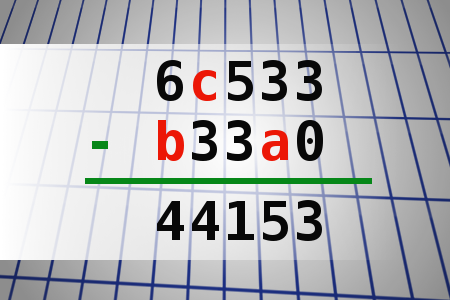Find number abc
If 6c533 - b33a0 = 44153 find number abc. Multiple solutions may exist.Correct answers: 28
The first user who solved this task is Nílton Corrêa de Sousa.
#brainteasers #math

Stung by a bee
A woman taking golf lessons had just started her first round when she was stung by a bee. Distraught, she went back into the clubhouse and told her golf teacher about the incident.
"Where did it sting you?" he asked.
"Between the first and second hole," she replied.
He shook his head and said: "That’s your problem right there. You had your feet too far apart!"

